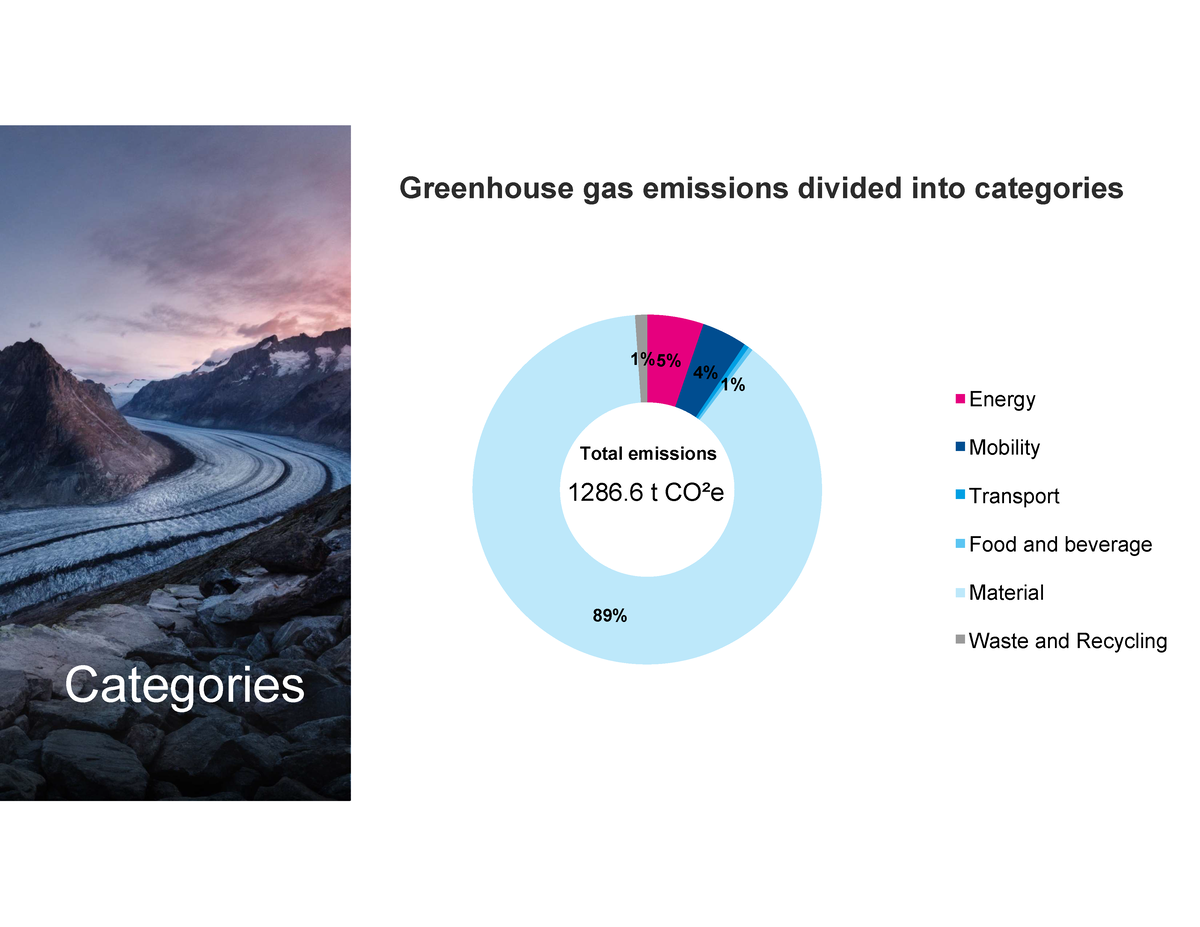What is a carbon footprint?
A carbon footprint calculation records and analyses the greenhouse gas emissions for a specific system, for example for products, services or companies as a whole.
What method is used to calculate the carbon footprint?
The carbon footprint is based on the internationally recognised standard "The GHG Protocol: A Corporate Accounting and Reporting Standard" and includes the climate-relevant greenhouse gases that fall under the operational control of a company. The data basis for the calculations originates from the ecoinvent database and the IPCC (Intergovernmental Panel on Climate Change) assessment method. The effect of these gases can be expressed with an equivalent amount of CO₂ as "kilograms of CO₂ equivalents" or "kg CO₂ e". These values are added together to calculate the climate impact.
What are the benefits of calculating your carbon footprint?
The calculation of a corporate carbon footprint (CCF) is an essential building block in corporate climate protection. It forms the basis for further steps in effective climate protection, such as the development, implementation and continuous monitoring of efficiency and reduction measures. A corporate carbon footprint is also needed to develop a CO₂ target with a reduction path for the sustainability strategy, as required by the Science Based Targets initiative (SBTi).
What were the results for TESTEX Zurich?
TESTEX’s greenhouse gas emissions per employee were 11’385kg CO₂.


What are the next steps?
Together with myclimate, TESTEX Zurich has carried out a hotspot analysis to identify the biggest emission drivers and reduction potential in the areas of CO₂, energy and resources. This analysis has provided an overview of possible starting points and general best practices in relevant areas. Initial measures and efficiency improvements can already be implemented, while the reduction targets and longer-term reduction path are in progress. These include:
- The evaluation of a photovoltaic system on the roof at TESTEX Zürich premises
- Close cooperation with equipment manufacturers to reduce carbon footprint emissions from laboratory equipment (these account for 89% of emissions).
- Transition to an electric car when the current company car needs replacing.
- Internal training to raise awareness amongst employees regarding the handling and procurement of chemicals and consumable materials.
- TESTEX’s branch offices in APAC as well as its Austrian subsidiary OETI are currently also performing carbon footprint calculations and their goals will be defined individually.
- TESTEX looks forward to providing further updates once measures have been implemented along its carbon footprint reduction journey.
